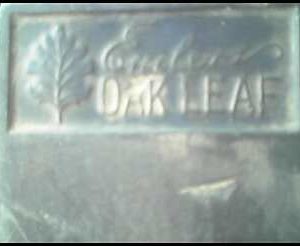*I’m not really sure where to post this so please excuse if you do not feel General Tools is appropriate.*
I am trying to properly identify a sharpening stone. I am not sure whether it is a water or oil stone and additionally, what grit it is.
It has the name “Euclers” (or “Euclevs”) and “Oak Leaf” on it. I can’t find anything on the web.
Any help would be great!
















Replies
Do you have a larger picture of the entire stone. It looks an awful lot like my blue Aoto japanese water stone, which is 4000 grit, (approx.). If so, it's a natural stone harvested in some special mountain in Japan. They are distinguishable by their natural fault lines running through the stone. Hard to tell from your picture, though.
Jeff
Hi Jeff,
Here is a larger picture. The stone is a consistent dark gray/blue color. Approx 2" by 6" * 1/2" thick.Thx
"100 Years" -- scribbled on the wall by a woodworker to remind him to do his best and as a warranty on his work -- "If anything I make fails in the first hundred years, bring it back, and I'll take care of it. After that, there will be a small charge. (Original purchaser only)"
Well, it's not an Aoto natural stone. It's smaller and much thinner than how they come.
Jeff
Edited 3/20/2006 5:04 pm ET by JeffHeath
That looks a lot like an old toiletry item, the now seldom used razor hone.
Do you have any idea what grit it might be if that's the case? Thx!
"100 Years" -- scribbled on the wall by a woodworker to remind him to do his best and as a warranty on his work -- "If anything I make fails in the first hundred years, bring it back, and I'll take care of it. After that, there will be a small charge. (Original purchaser only)"
I have no idea as to what grit they were not built to a common standard. work with it a little and see what it does to an edge. Just don't be surprised if you get a sudden compulsion to shave with the edge you create. lol
I second AB's opinion that it is a razor hone, they typically had the names molded into the stone. It's a fine grit manmade stone and will probably work well with water.
John W.
From your last picture it appears to be a black arkansas stone. If it is ,you can hone to almost a mirror finish after the coarser honings on other stones.
mike
Not likely that it is an Arkansas stone, it would be very difficult to carve away the stone to create the embossed name. Razor stones were molded from a clay compound so it was easy to incorporate the name plate in the mold.
John W.
I have a similar stone with an embossed name (in german) and was told it was a razor sharpening stone. I use it as my final stone before felt wheel with Veritas compound. Like someone else said - just try it out!
My long departed father was a barber. I saw similar stones in his shop. Back in the day the majority of his income was from shaves. With the exception of the lather, water never touched his blades. DAMHIKT! Oh! And blood was promply removed. Very corrosive! he-hee. Learned at a very early age that you didn't mess with a barbers straight razors. Kinda like fondling a WWers favorite plane. Come to think of it, he wasn't real proud of me when I used a pair of his Double Ducks to make paper airplanes, either. Whoa! Got me waxing nostalgic now.
Later,
Chuck
So does that mean he used the stone dry?Good memories :)
"100 Years" -- scribbled on the wall by a woodworker to remind him to do his best and as a warranty on his work -- "If anything I make fails in the first hundred years, bring it back, and I'll take care of it. After that, there will be a small charge. (Original purchaser only)"
Z, Being just a kid at the time, I recall seeing similar stones while snooping in his cabinets. Can't remember actually seeing him use one, so your guess is as good as mine. A previous post stated they were used dry and I can't argue.
Chuck
I have a similar stone. The embossed area says it is a King Midas razor honing stone, made in Indiana, PA. It was my grandfather's, and he used it to hone his straight razor. One side is brick red and the other black. The line on the edge of the stone where the two colors merge is kind of irregular, indicating to me that it was made of two plastic materials (clay with abrasive added?), sandwiched together, and then baked. It is used dry, like a sharpening steel for a chef's knife. Then you would use a leather strop. My grandfather came to this country in 1899 at the age of 21 and moved from Pennsylvania to Ohio in 1926, so I would put the stone's age at between 80 and 106 years.
Edited 3/28/2006 9:10 am ET by joespehar
I found one in my stuff just like yours yesterday.
Here's what I found.
Wm. Enders Oak Leaf Razor hone No. E16 made in St. Louis, Mo.
Brand name: DomesticTitanVintage
This forum post is now archived. Commenting has been disabled